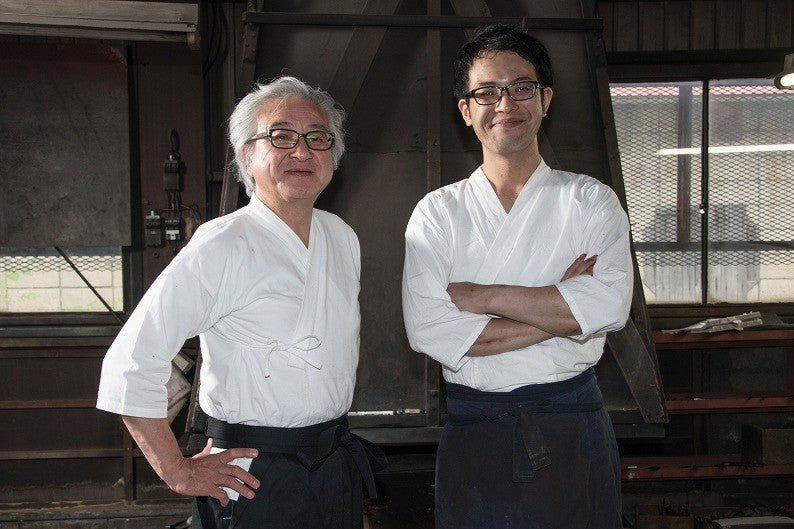Nigara White 1 Mizu-Honyaki 240mm Samuri Sword Hamon Gyuto Snakewood Handle
Nigara White 1 Mizu-Honyaki 240mm Samuri Sword Hamon Gyuto Snakewood Handle is backordered and will ship as soon as it is back in stock.
Couldn't load pickup availability
Detailed Specifications
| Line | Nigara Honyaki |
| Profile | Gyuto / Chefs Knife |
| Bevel Type | Double Bevel |
| Weight | 228 g 8.04 oz |
| Edge Length | 240 mm .9.45 inch |
| Heel Height | 50 mm .1.97 inch |
| Width @ Spine | 3.9 mm 0.15 inch |
| Width @ Mid | 3.1 mm 0.12 inch |
| Width @ 1cm from Tip | 1.0 mm 0.04 inch |
| Steel | White 1 / Shirogami #1 | Carbon |
| Blade Construction | Honyaki |
| Hardness (HRC) | 62 - 65 |
| Surface Finish | Etched |
| Handle | Octagonal Birch Burl with Spacer |
| Region | Aomori |
| Best for |
|
Nigara White 1 Mizu-honyaki Gyuto 240mm, special Samuri Sword style Hamon, with the hamon line very close to the edge. Lots of highly desirable steel banding "cloud".
Forged by Gou Yoshizawa who also forges Katana himself. This is a kitchen knife that is as close as a Japanese Katana.
Care Instruction
- Don't cut hard things! Japanese knives are brittle so bone hacking is a NO NO!
- Wash with neutral detergent after use, and wipe dry;
- Please don't wash knife with dishwasher, it will damage the wood handle;
- Be careful not to leave the knife close to a heat source for a long time;
- It is a lot more dangerous to cut with a blunt knife than a sharp knife!
- It is best to sharpen a Japanese knife regularly on a waterstone.
- Oil the (carbon) knife if storing for an extended period of time to prevent rust.



























